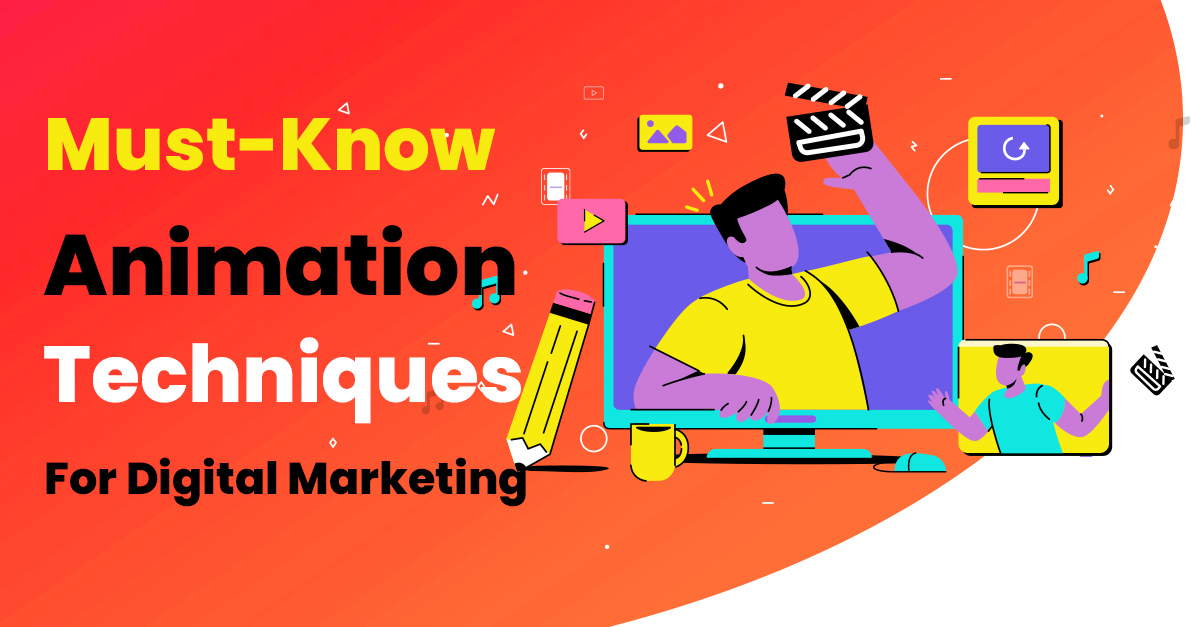Animation is the process of creating the illusion of motion and change by rapidly displaying a sequence of static images, or frames, that minimally differ from each other. When these frames are played in quick succession, the human eye perceives them as continuous motion.
As technology advances, you need to advance yourself too. And to help you with this we provide our finest Digital Marketing Certification by Intellipaat.
Animation is used in a wide range of media, including film, television, video games, and advertising. It is also used for educational and scientific purposes, such as in medical and engineering simulations.
There are many different techniques and styles of animation, each with its own unique characteristics and requirements.
Some of the most frequent forms of animation are as follows:
Traditional Animation: This is the oldest form of animation, where each frame is hand-drawn by an artist. This technique was used extensively in classic Disney movies like Snow White and the Seven Dwarfs and Sleeping Beauty.
Computer Animation: This type of animation uses software to create and manipulate digital images. Computer-generated imagery (CGI) has become increasingly popular in movies and video games.
Stop-Motion Animation: This technique involves physically moving objects and capturing each frame one at a time. This can be done with claymation, puppets, or even real objects.
2D Animation: Images are created using two-dimensional animation techniques. This covers both conventional hand-drawn animation and computer animation produced with tools like Adobe Animate.
3D Animation: This type of animation involves creating images in a three-dimensional space. This can be done using software like Maya or Blender and is often used in movies, video games, and virtual reality experiences.
In order to create animation, artists, and animators use a variety of tools and software, including drawing tablets, animation software, and editing programs. They may also use reference materials, such as photographs or videos, to help create realistic movement and motion.
Animation can be a time-consuming process, requiring careful planning and attention to detail. However, the end result can be a visually stunning and engaging experience for audiences of all ages.
Do have a look at Intellipaat’s Digital Marketing Course video which will surely help you to know more about the topic and master digital marketing.
Animation Techniques You Must Master For Digital Marketing
Animation is a powerful tool for digital marketing. It can help businesses create engaging content that captures the attention of their target audience. Animation can be used to tell stories, explain complex concepts, showcase products, and more. In this blog, we will explore some of the must-know animation techniques for digital marketing.
Explainer Videos
Explainer videos are a popular type of animation that is used to explain complex ideas or concepts in a simple and easy-to-understand way. These videos typically use a combination of animation, voiceover narration, and text to convey their message. Explainer videos are often used to promote products or services, but they can also be used for educational purposes.
One of the advantages of explainer videos is that they can be easily shared on social media, websites, and other online platforms. They can also be optimized for search engines, making it easier for people to find them when they search for related keywords.
Whiteboard Animation
Whiteboard animation is a popular animation technique that simulates the process of drawing on a whiteboard or chalkboard. This technique is often used to explain complex ideas or concepts in a simple and easy-to-understand way. Whiteboard animations typically use a combination of animation, voiceover narration, and sound effects to tell a story.
One of the advantages of whiteboard animation is that it can be used to create engaging content that captures the attention of the viewer. It is also a cost-effective animation technique that can be used by businesses of all sizes.
2D Animation
2D animation is a popular animation technique that involves creating images in a two-dimensional space. This technique is often used to create animated characters and environments for use in movies, TV shows, and video games. 2D animation can also be used for digital marketing purposes.
One of the advantages of 2D animation is that it is a versatile technique that can be used to create a wide range of content, from simple animated graphics to complex animations. 2D animation can also be used to create engaging social media posts and ads that capture the attention of the viewer.
Motion Graphics
Motion graphics is a type of animation that is used to create animated graphics and visual effects. This technique is often used to create animated logos, title sequences, and other visual elements for use in movies, TV shows, and video games. Motion graphics can also be used for digital marketing purposes.
One of the advantages of motion graphics is that it can be used to create visually stunning and engaging content that captures the attention of the viewer. Motion graphics can also be used to create animated infographics and data visualizations that are easy to understand and share.
3D Animation
3D animation is a popular animation technique that involves creating images in a three-dimensional space. This technique is often used to create animated characters and environments for use in movies, TV shows, and video games. 3D animation can also be used for digital marketing purposes.
One of the advantages of 3D animation is that it can be used to create highly realistic and detailed animations that are difficult to achieve using other animation techniques. 3D animation can also be used to create interactive experiences, such as virtual reality and augmented reality applications.
Conclusion
Animation is a powerful tool for digital marketing. It can help businesses create engaging content that captures the attention of their target audience. There are many different animation techniques that can be used for digital marketing purposes, including explainer videos, whiteboard animation, 2D animation, motion graphics, and 3D animation. By using these animation techniques, businesses can create content that stands out and helps them achieve their marketing goals.
